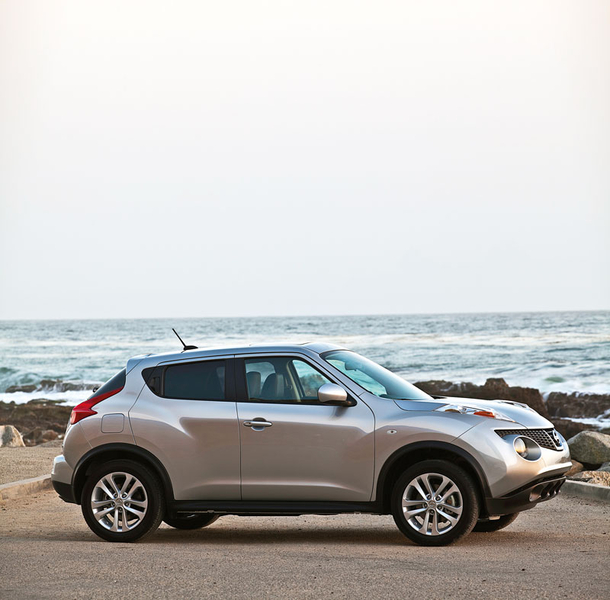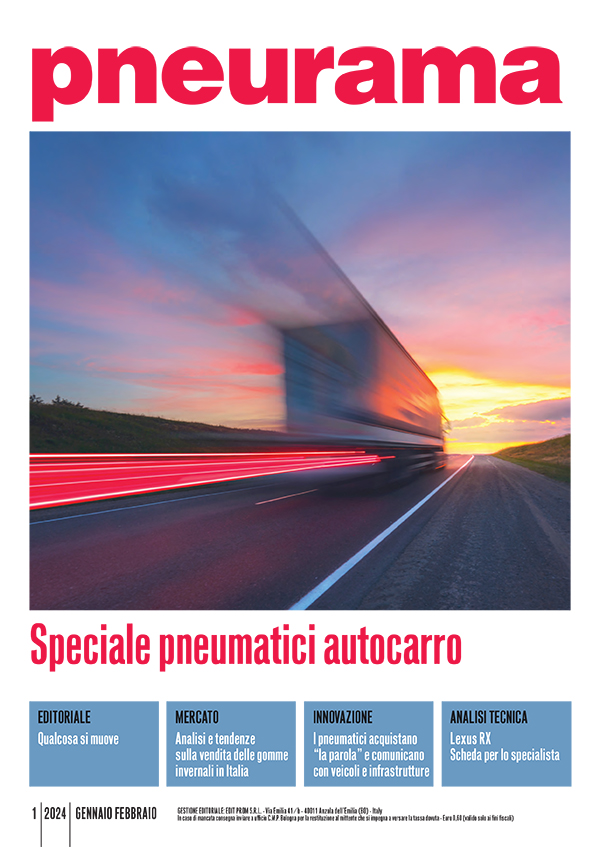Call me crossover
The first sport utility vehicle of the modern era, the Qashqai has now been revamped and powered by low-emission mild and full-electric powertrains

IRREVERENT AND MISCHIEVOUS, it looks like something out of a manga cartoon but guarantees performance and safety without the pretentiousness of more serious models, just the way today’s young people like it. Juke is the class B sport utility that has joined the updated Qashqai and Murano and although it is decidedly different from its big brothers there is still that family feeling that gives it every right to wear the Nissan badge.
Made at the Washington industrial complex in Great Britain, Nissan Juke debuted about two years ago and it was an immediate success because of its originality and flexibility while maintaining sound contents and a dynamism that was certainly up to date, particularly in the special editions. No mean feat given the times we live in and the targeted market segment, where it competed with SUVs and small saloons that were undoubtedly more conventional to look at and had more homologated contents.
Dedicated to young people
As showy as it is extremely personal, the design is of the kind that certainly does not go unnoticed: a lower half that is decidedly SUV with wide shoulders, generous wheels, dark doorsills and wraparound underbody as if to simulate the protection provided by real 4x4s. Above, it is much more saloon-like, sufficiently streamlined with the roof tapering towards the tailgate, a high centreline and with rear door handles concealed in the pillars it almost looks like a three-door. Decisive and unequivocal stylistic choices made by Nissan Design Europe in London, which also designed the very personal light units with separate elements in the front and an unusual elongated shape for the top pair that host the sidelights and indicators; at the back, the boomerang style is similar to that on the sporty Nissan 370Z.
Originality also on the inside with a functional but refined cabin dominated by a rounded dashboard with circular instruments like those on a motorcycle, a central console that incorporates climate control and navigation, a colourful cover on the transmission tunnel, and finishes that are the same as the door panels and designed to give a lighter impression overall. Even with a full load, the five seats are adequate despite the fact that they are not exactly station wagon size. With an external length of 4.15 metres, the 251 available litres of cargo space (where the spare wheel is located) can be increased to 830 by folding down the split rear seat. Internal finishes and standard equipment depend on the various trim levels of versions called Visia, Acenta and Tekna, like the other Nissan ranges. There is also a series of personalized editions and a long list of options for on-board comfort. Standard on all models are air conditioning, radio and six airbags, which can be upgraded to include prestigious elements like automatic climate control, rear view camera for parking, upgraded entertainment centre, Nissan Dynamic Control System (NDCS), and satellite navigator with 5” display.
Brio and passion
With mechanics simplified by the use of the B platform shared by the Nissan-Renault joint-venture, Juke has benefitted with engines that are at the basis of the traction offered by the small SUV depending on the type of transmission chosen. Beginning with the smooth 1.6, 117 HP petrol engine, an obligatory choice for the entry level, also in the combined petrol/LPG version with conventional 5-gear manual transmission or automatic Xtronic CVT (Continuously Variable Transmission), which guarantees the simplicity of a scooter and consumption of 15.6 km/litre. Interesting and inescapable at intermediate level is the Diesel 1.5 dCi, the well-known turbocharged, 110 HP 4 cylinder with maximum torque of 240 Nm. Its performance speed-wise is less brilliant, but diesel consumption is reduced on average to 19.6 km/litre, in this case combined exclusively with the 6-gear manual transmission. At the top of the list for performance, equipment and, obviously, price is the new 1.6, 190 HP petrol DIG-T, a modern engine that relies on a technological mix of direct injection, variable valve timing and air compression for achieving maximum energy efficiency. Six-gear manual transmission handles torque in the two-wheel drive version to give the Juke a top speed of 215 km/h with declared consumption of 14.5 km/litre. Only the all-wheel drive models are equipped with the automatic Xtronic CVT, with 6-gear manual mode, that will guarantee a top speed of 200 km/h and an average of 13.2 km/litre.
Every rule has its exception and in this case it is nothing less than the exclusive Nismo trim that is peppery enough to represent the maximum dynamism possible for the Juke – if you exclude the special 545 HP Juke-R version made only to order – and offer a top of the range that is as appealing as it is exclusive. A real novelty considering that Nismo (Nissan Motorsport) is the Japanese company’s motorsports division and that most people will know about it through Playstation and not supertouring circuits. The 1.6 turbocharged engine benefits from an increase in power of up to 200 HP, acceleration from 0-100 km/h in 7.8 sec for the two-wheel drive version (2-tenths less than the normal Juke), specific suspension and steering calibration, but above all a dedicated look for the debut of the Nismo logo for Nissan’s road production that conjures up magnificence and heraldry with an unequivocal racing flavour.
Also simplified in the more widespread two-wheel drive version is the layout of the suspension with independent front wheels, superimposed arms and rear torsion bar, which has been replaced with independent wheels with Qashqai-derived multiple arms in the models with four-wheel drive. Here the transmission benefits from Nissan’s All-Mode 4x4-i technology, which relies on electronic separation for the balanced supply of torque to the two axles based on the tyres’ grip, variable by up to 50% between the front and the rear. Making its debut on the Juke is the Torque Vectoring system, an innovative system for moving power between the two rear wheels by up to 100%, just like a conventional self-locking differential.
Robust and oversized for the vehicle category, as you would expect from a mid-range crossover, the wheels have 16” steel or alloy rims, or 17” alloy rims. The tyres are strictly for road use without any off-roading ambitions in sizes 205/60 R16 and 215/55 R17, with the more exuberant 225/45 R18 tyre for the peppy sport version, Juke Nismo.
The first sport utility vehicle of the modern era, the Qashqai has now been revamped and powered by low-emission mild and full-electric powertrains
As one era draws to an end another one begins. With the 240 series, dating back to the 80’s, Volvo introduced diesel engines on a large scale, now with the new S60, diesel engines disappear from the Swedish maker’s catalogue in favour of plug-in hybrids
Two levels of power and decent mileage (450 kilometres) for the Korean crossover ready to take on the EV market. High-capacity batteries and snappy engines characterize this urban crossover
